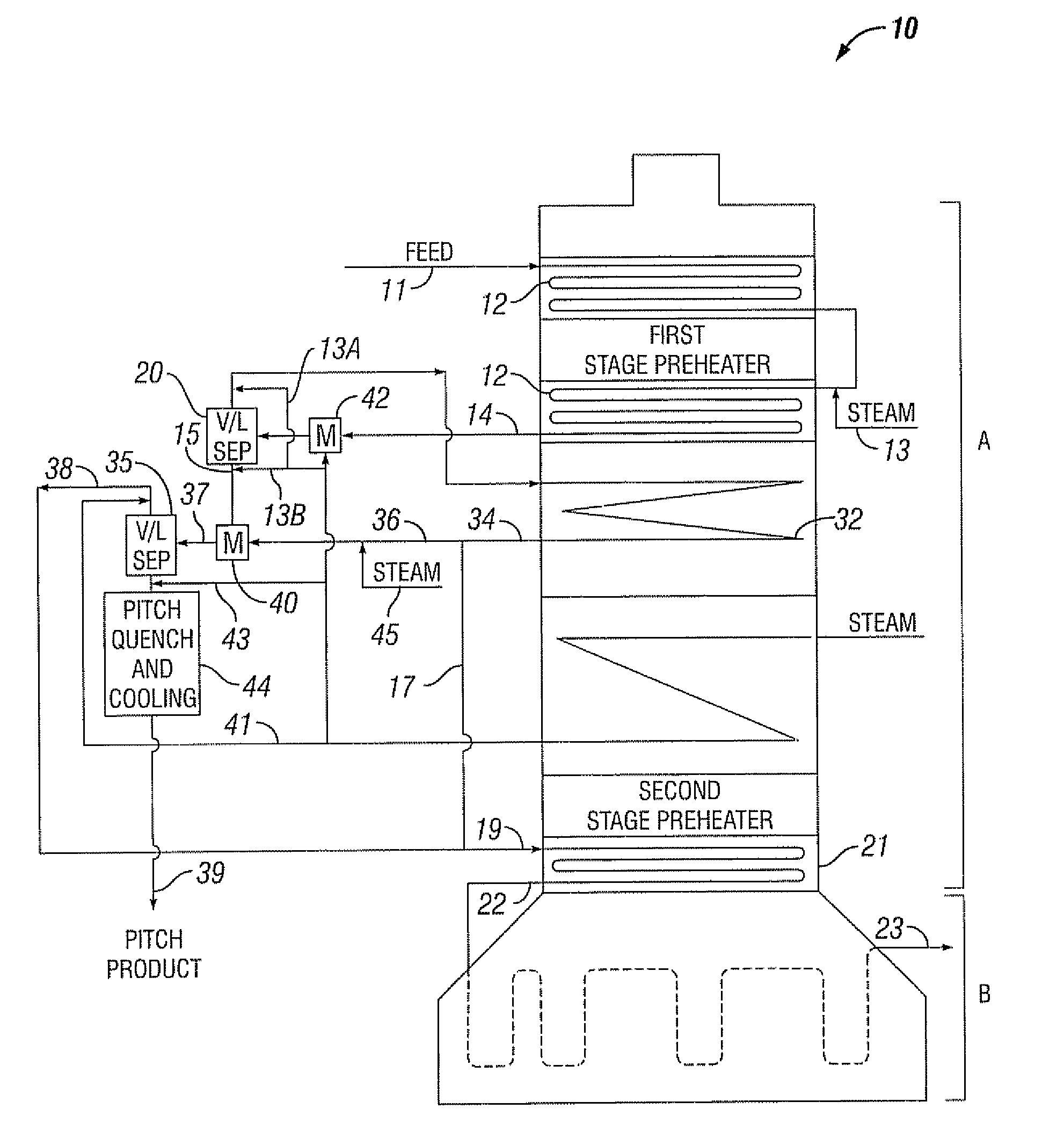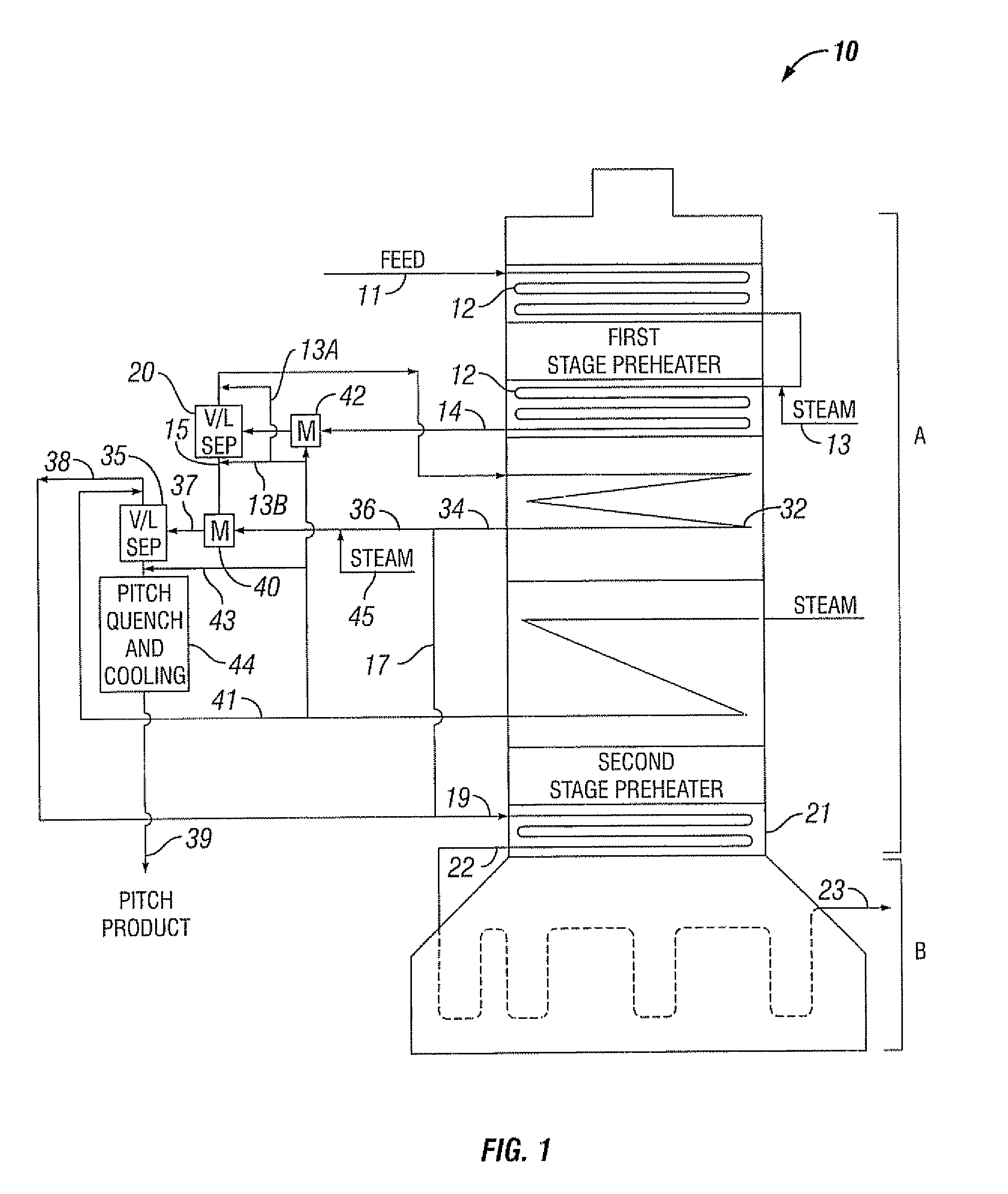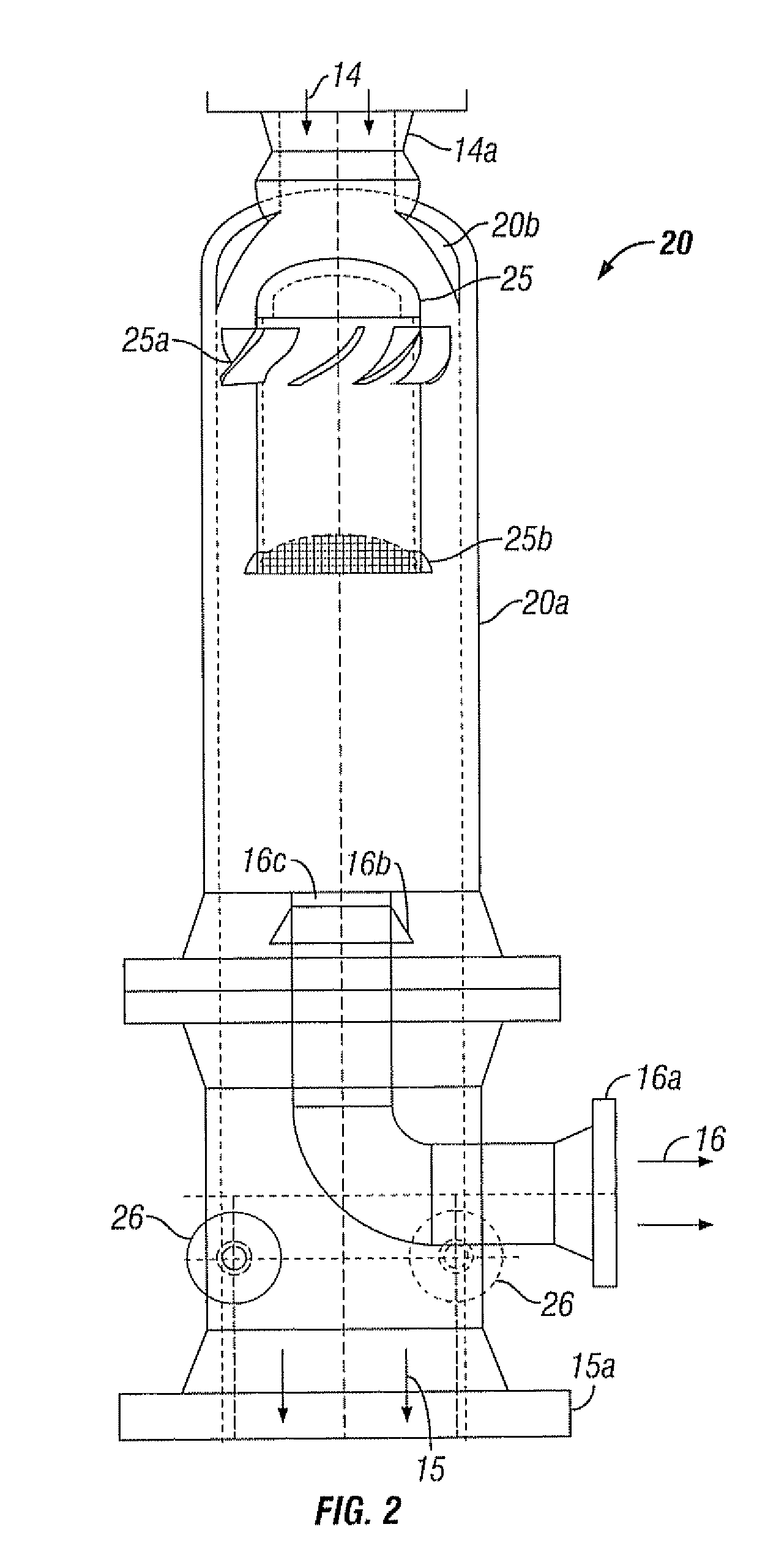Process for producing lower olefins from heavy hydrocarbon feedstock utilizing two vapor/liquid separators
a technology of vapor/liquid separator and heavy hydrocarbon feedstock, which is applied in the direction of separation process, thermal non-catalytic cracking, liquid degasification, etc., can solve the problems of not making good feedstocks for pyrolytic cracking and limitations in achieving higher yields of more valuable products, so as to reduce the amount of dilution steam and improve the effect of energy efficiency
- Summary
- Abstract
- Description
- Claims
- Application Information
AI Technical Summary
Benefits of technology
Problems solved by technology
Method used
Image
Examples
Embodiment Construction
[0022] The heavy hydrocarbon feed (i.e. hydrocarbon feedstock containing undesirable coke precursors and / or high boiling pitch fractions that cannot be completely vaporized under convection section conditions) may comprise a range of heavy hydrocarbons. “Pitch” as used herein includes petroleum pitch and all other high boiling point heavy end fractions present in a feedstock that contain coke precursors or foulants. Examples of suitable feedstocks include, but are not limited to, one or more of long and short crude oil residues, heavy hydrocarbon streams from refinery processes, vacuum gas oils, heavy gas oil, and crude oil. Other examples include, but are not limited to, deasphalted oil, oils derived from tar sands, oil shale and coal, and synthetic hydrocarbons such as SMDS (Shell Middle Distillate Synthesis) heavy ends, GTL (Gas to Liquid) heavy ends, Heavy Paraffins Synthesis products, Fischer Tropsch products and hydrocrackate.
[0023] The invention is described below while refe...
PUM
| Property | Measurement | Unit |
|---|---|---|
| Temperature | aaaaa | aaaaa |
| Temperature | aaaaa | aaaaa |
| Temperature | aaaaa | aaaaa |
Abstract
Description
Claims
Application Information
 Login to View More
Login to View More - R&D
- Intellectual Property
- Life Sciences
- Materials
- Tech Scout
- Unparalleled Data Quality
- Higher Quality Content
- 60% Fewer Hallucinations
Browse by: Latest US Patents, China's latest patents, Technical Efficacy Thesaurus, Application Domain, Technology Topic, Popular Technical Reports.
© 2025 PatSnap. All rights reserved.Legal|Privacy policy|Modern Slavery Act Transparency Statement|Sitemap|About US| Contact US: help@patsnap.com



